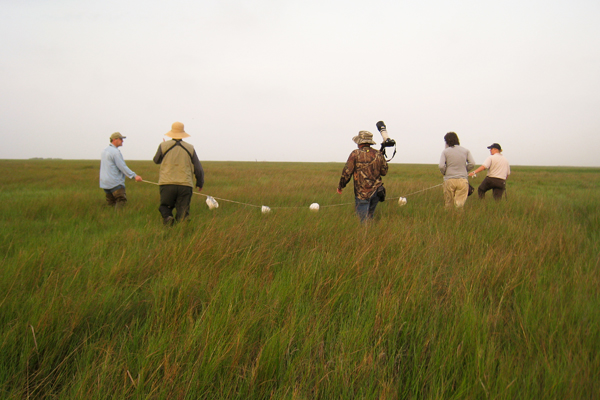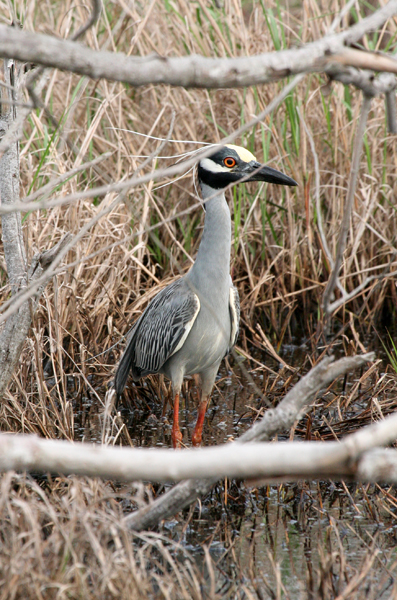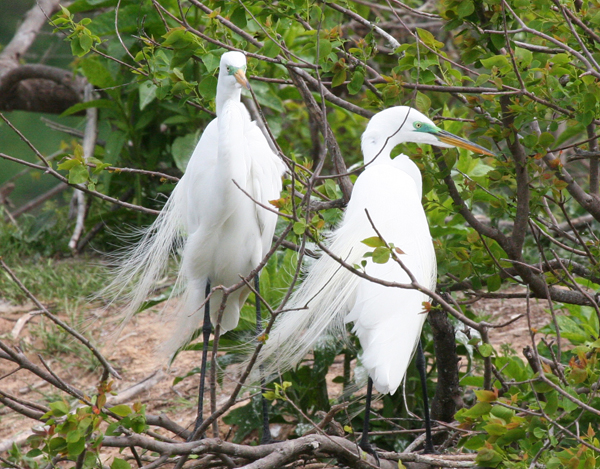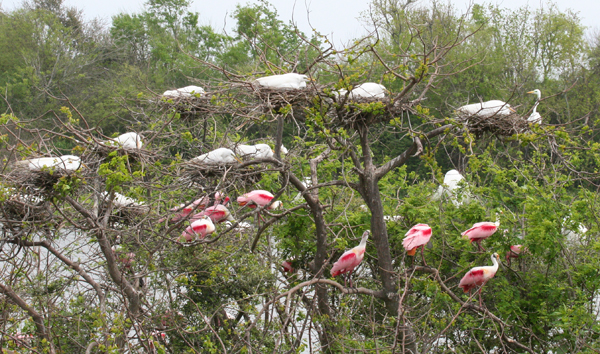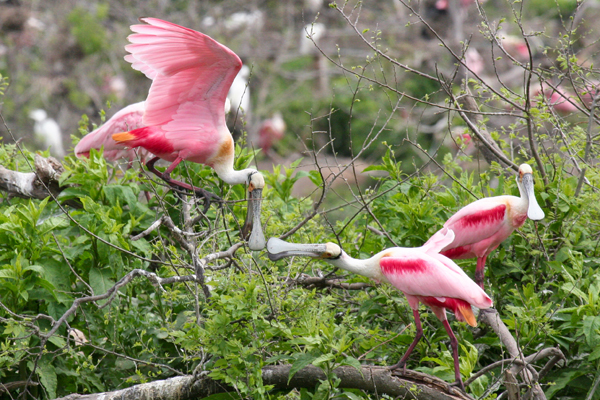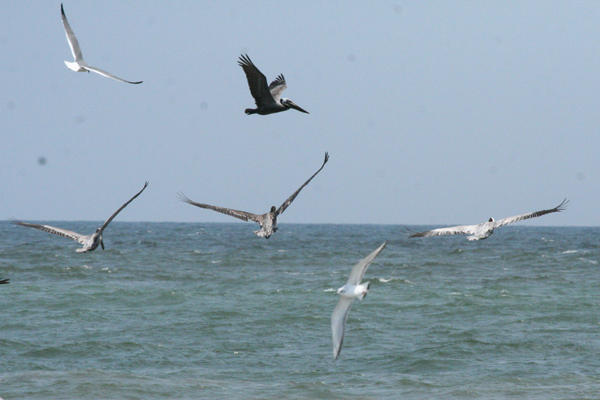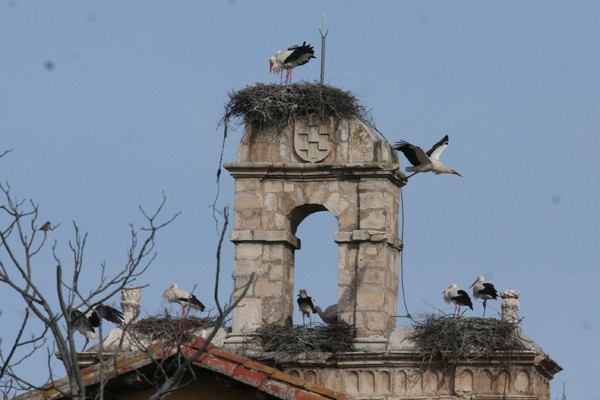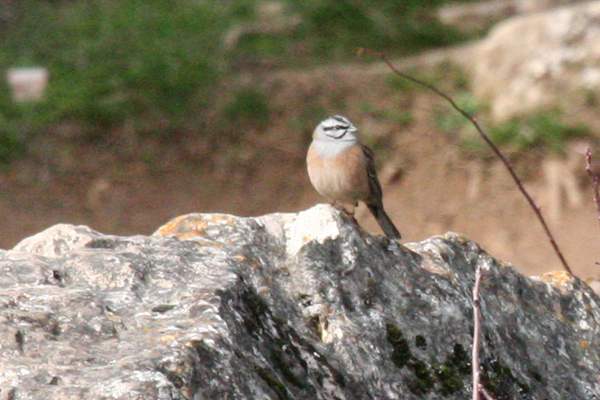On February 21, 2011 we boarded Delta in Des Moines to fly to Madrid through JFK. We arrived in Madrid the next morning (a 7 hour loss of time included). The arrival process through passport control, etc., was quick and easy. We chose not to have a car in Madrid, so we did not rent a car at that time, but chose instead to take the Metro from the airport to downtown Madrid, where our hotel, the Preciados, was very well located for the purpose of walking or connecting to the Metro in Madrid. The Metro ride involved some walking to find the right platforms, but it worked well and we arrived at a stop just a block from the hotel. The hotel welcomed us even though we were quite early (about 10:00 a.m.) and our nice room was already prepared for us. After a short rest, we began our tour of Spain by walking down to Puerto de Sol,
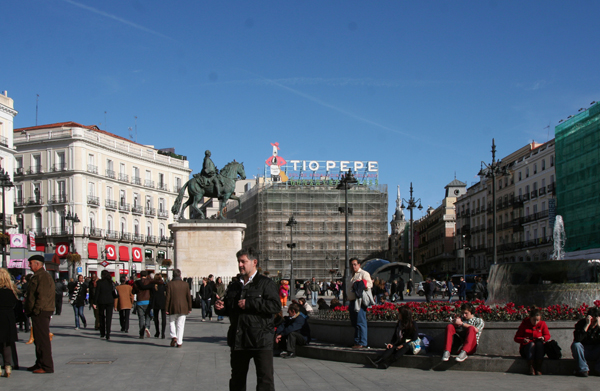
over to the Plaza Mayor, 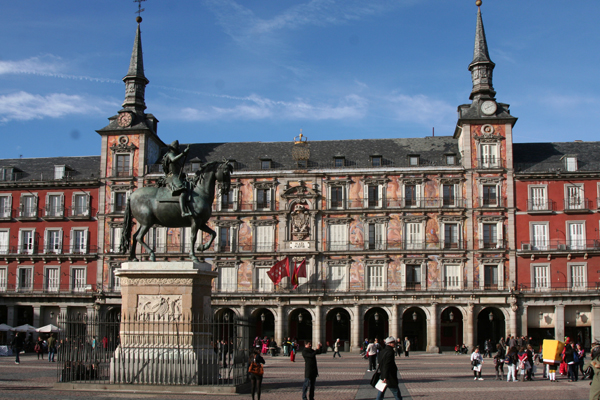
the Royal Palace, and then back to the hotel. Madrid is beautiful, and crowds of people were out and about, walking, visiting, shopping, etc. We found a fantastic market with fruits, vegetables, fish, pastries, and much more.

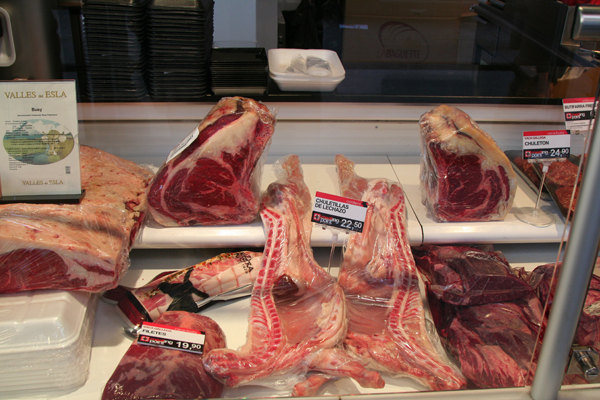
This is indeed a very nice city for a walk about. That evening we were introduced to the Spanish custom of late dining. The “sit-down” restaurants do not open until 8:30 and we were, of course, the first ones there, at the El Senador, when we arrived at 8:30. The food and wine were excellent. The language differences were not a big problem.
We planned to travel in Spain and Portugal from February 22 through March 9. We were to be joined in Madrid by a daughter and son-in-law on the 24th. They were returning on March 7th from Lisbon, Portugal, whereas we were driving back from Lisbon to Madrid for a day of birding with a local guide on the 8th (which you have already read about here in an earlier post) and departing Madrid on the 9th. With the help of the invaluable Rick Steves 2011 books on Spain and Portugal and a significant amount of online research, our plans were quite detailed before we departed from Des Moines. We had made all of our hotel reservations except for 2 nights in Lisbon, which we deferred because of uncertainty about our schedule in Portugal. We had reserved a car for pickup at the Madrid Airport on the day, the 26th, when we left Madrid to drive to Barcelona. The decision to rent a car came after cost comparisons for the four of us traveling by train or plane on our itinerary in Spain and Portugal. Car rental was far less expensive on a per person basis. Although the rental agency would not guarantee us an automatic transmission car, we were offered one when we went to the rental counter at the Madrid Airport on the 26th, much to the relief of my wife. She had been concerned about driving a stick-shift, and neither of our “children” had ever driven a stick-shift, so it could have resulted in my being the sole driver, except on the open roads where not much shifting would have been required.
On the 23rd Barbara and I went to Escorial to see the Monasterio de San Lorenzo de El Escorial. To get there, we walked from our hotel to the metro station, took the metro to the bus station, and rode the bus from Madrid to the bus station in Escorial. We were on a very nice highway with nice views of the snow-capped mountains and pleasant farm fields along the way. Escorial is a nice, smaller town. We arrived at the palace/monastery/basilica about 11:30, but it was closed to the public until 2:30 because Queen Sofia was there for an event. We spent our open hours having lunch at a little sidewalk restaurant in the old town and walking in the gardens.
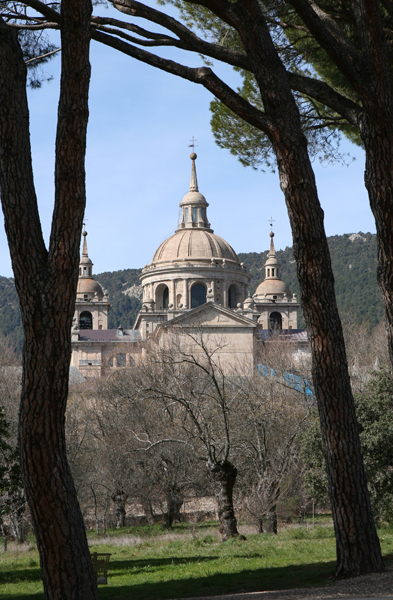
The Palace is huge and elaborate. About 25 kings and queens are “encrypted” there in an amazing facility, the Royal Pantheon. We understand that the “rotting room” adjacent to the crypt still contains the remains of the father of the present King, Juan Carlos, who died over 30 years ago. He, Don Juan, was technically never King because Franco took control of Spain before he was crowned, and Franco appointed his son, Juan Carlos, as King when the monarchy was reinstituted. So, controversy exists as to whether “King” Don Juan was really a king, and therefore, whether or not his remains can be placed in the Royal Pantheon. And, to make matters worse, there is only one spot left, so where does that leave Juan Carlos and Sofia?

The Palace, Church and Monastery at Escorial are full of beautiful art and objects, many plated with gold. The sculpture of Christ on the cross is magnificient. We became a little disoriented making our way through the labyrinthian facilities and had to hurry to get out before the 6:00 p.m. closing. In the distance on the bus ride back to Madrid, we could see the the 500-foot-tall ganite cross marking the Valley of the Fallen (victims of the Spanish Civil War of the 1930s) which is the mausoleum of Franco. We understand that it is currently closed and undergoing a long process of restoration, though it is not that ancient.

Tomorrow our kids will arrive and meet us at the hotel. From there we will spend a day of sight-seeing in Madrid, to be followed the next day by a train ride to Toledo and a day of sightseeing there.

